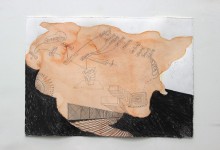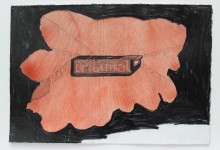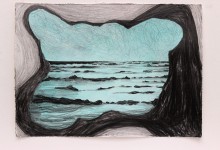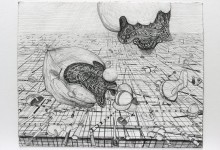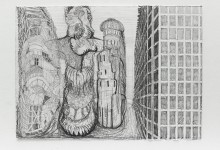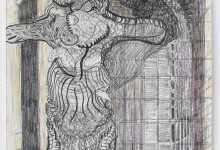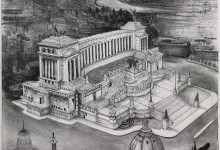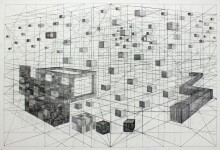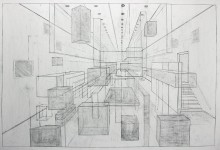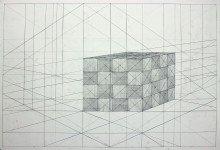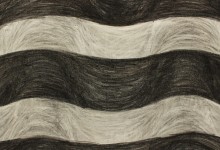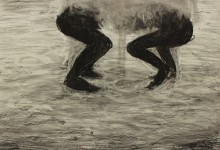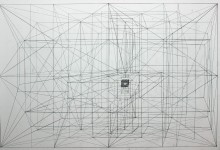Opening reception: Saturday, March 2, 2019 from 3-5 p.m.
Robbie Cornelissen : The Battle of Hernen
Text by Katherine Lissitsa
The Hernen Castle has been quaintly standing in the small Dutch village of its namesake since the 14th century, successfully preserved to showcase its original medieval appearance today. And while the long and noble history of the castle itself never crossed paths with a battlefield, the imaginative draftsmanship of Robbie Cornelissen altered its course in a dramatically different way.
Inspired by the vivid renditions of combat in Paolo Uccello’s The Battle of San Romano1, Cornelissen resurrects the medieval era by creating a stop-motion animation titled The Battle of Hernen2, which depicts a fictitious battle set on the grounds of the Hernen Castle. Cornelissen channels the medieval times through hundreds of charcoal drawings, showcasing a bloody battle between two opposing camps. As the knights go to war, their shields fiercely march towards the viewer, their swords mercilessly pierce their opponents, and the crimson result of their casualties flows through a forest of tall and haunting trees. But as the animation nears its end, the sea of red seeps into the earth to give way to new life that will rejuvenate nature anew.
As the lines in The Battle of Hernen appear, converge, condense, morph and disappear, the viewer is taken back into the past to experience an abstracted, historical, and warlike story. Simultaneously, the dynamic storm of black charcoal on white paper evokes what is rooted in timelessness and universality — the cyclical nature of life and death.
Hailing from Utrecht in the Netherlands, Robbie Cornelissen is known for his monumental and multidimensional drawings, which he’s been creating and exhibiting since the 90s. In the animated series The Number 9, his drawings leap off the page to become stop-motion films that showcase the development of architectural forms. Within them, lines transcend into an illusionary space where the eye follows the ever-changing choreography of geometric patterns.
Cornelissen’s drawings toy with perspective in such a way that immerses the viewer, inviting them to step into his graphite-ridden mindscapes. The newer drawings shown in The Battle of Hernen exhibition also echo the notion of entering a mental space, but with the addition of new elements. Incorporating colour pencil and watercolour as opposed to his usual suspects, Cornelissen delves into new themes he is in the process of developing.
Throughout his career, Cornelissen has remained true to the importance of the humble pencil — a tool that allows a simple line to evolve into a complex expression. The drawing process is essential to Robbie Cornelissen’s craftsmanship, but he also believes that the medium represents a universal visual language, fundamentally linking and uniting all people across our vast and varied world.
1. Paolo Ucello, The Battle of San Romano, 1435-60, egg tempera with walnut oil and lineseed oil on poplar, triptych, London, The National Gallery; Paris, The Louvre; Florence, The Uffizi.
2. The Battle of Hernen was originally commissioned as part of the collective project A Soft Rustle, where seven artists developed installations inspired by seven different castles located in the province of Gelderland, Netherlands.



